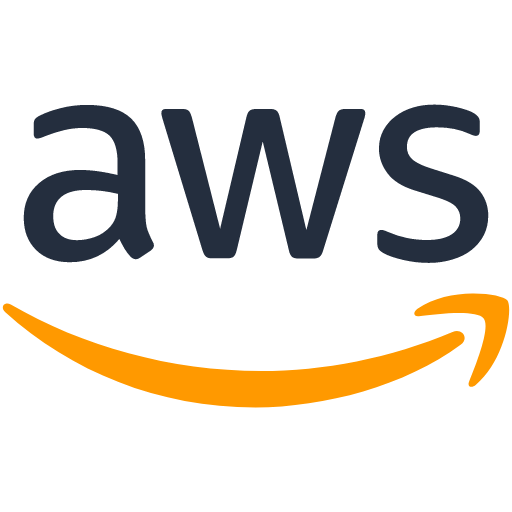
AWS Cloud Platform: Infrastructure Mastery
Master AWS cloud services for DevOps. Learn VPC, EC2, S3, IAM, RDS, and container services for scalable infrastructure.
Workshop Agenda
AWS Cloud Platform: Infrastructure Mastery
Step 6 of the DevOps Roadmap
Pick one of the cloud providers AWS, GCP or Azure. Start with core services e.g. AWS VPC, EC2, S3, IAM, and then RDS, Route53, Cloudwatch and ECS. Create and deploy some application to AWS.
Why AWS for DevOps?
AWS is the leading cloud platform for DevOps because:
- Comprehensive service portfolio for all infrastructure needs
- Global infrastructure with high availability
- Extensive automation and API capabilities
- Strong integration with DevOps tools
- Industry-standard security and compliance
What You'll Learn
AWS Fundamentals
Cloud Computing Concepts
- Cloud service models (IaaS, PaaS, SaaS)
- AWS global infrastructure
- AWS pricing models and cost optimization
- AWS Well-Architected Framework
AWS Account Management
- Account setup and organization
- Billing and cost management
- Support plans and resources
- AWS CLI and SDK setup
Identity & Access Management (IAM)
Security Foundations
- Users, groups, and roles
- Policies and permissions
- Multi-factor authentication (MFA)
- Security best practices
Advanced IAM
- Cross-account access
- Service-linked roles
- Identity federation
- Access logging and monitoring
Virtual Private Cloud (VPC)
Network Architecture
- VPC creation and configuration
- Subnets and availability zones
- Route tables and gateways
- Security groups and NACLs
Advanced Networking
- VPC peering and Transit Gateway
- VPN and Direct Connect
- Load balancers and target groups
- DNS and Route 53
Compute Services
Amazon EC2
- Instance types and selection
- AMI creation and management
- Auto Scaling groups
- Elastic Load Balancing
Container Services
- Amazon ECS and Fargate
- Elastic Kubernetes Service (EKS)
- Container registries (ECR)
- Service mesh integration
Storage Services
Amazon S3
- Bucket configuration and policies
- Storage classes and lifecycle
- Static website hosting
- Cross-region replication
Block & File Storage
- Elastic Block Store (EBS)
- Elastic File System (EFS)
- Storage performance optimization
- Backup and snapshot strategies
Database Services
Amazon RDS
- Database engine selection
- Multi-AZ deployments
- Read replicas and scaling
- Backup and restore procedures
NoSQL & Analytics
- DynamoDB for NoSQL workloads
- ElastiCache for caching
- Data warehousing with Redshift
- Analytics services overview
Monitoring & Logging
Amazon CloudWatch
- Metrics and alarms
- Log aggregation and analysis
- Dashboard creation
- Custom metrics and events
AWS X-Ray & CloudTrail
- Application performance monitoring
- Distributed tracing
- API call logging
- Compliance and auditing
Hands-on Projects
Project 1: Multi-Tier Web Application
Deploy scalable web application:
- VPC with public and private subnets
- Auto Scaling EC2 instances
- Application Load Balancer
- RDS database with Multi-AZ
Project 2: Containerized Microservices
Build container-based architecture:
- ECS cluster with Fargate
- Service discovery and load balancing
- Container image pipeline
- Monitoring and logging setup
Project 3: Data Pipeline & Analytics
Create data processing system:
- S3 data lake architecture
- Lambda for serverless processing
- CloudWatch for monitoring
- Cost optimization implementation
Project 4: Disaster Recovery Setup
Implement enterprise DR solution:
- Cross-region replication
- Automated failover procedures
- Backup and restore testing
- Recovery time optimization
Course Modules
Module 1: AWS Foundations
- Cloud computing overview
- AWS account setup
- IAM security fundamentals
- Core service introduction
Module 2: Networking & Compute
- VPC design and implementation
- EC2 instance management
- Load balancing strategies
- Auto Scaling configuration
Module 3: Storage & Databases
- S3 storage strategies
- EBS and EFS implementation
- RDS database management
- Data backup and recovery
Module 4: Containers & Serverless
- ECS and EKS container platforms
- Lambda serverless functions
- API Gateway integration
- Event-driven architectures
Lab Environment
- AWS Free Tier account
- Hands-on lab exercises
- Real-world scenarios
- Cost-controlled environments
Prerequisites
- Required: All previous DevOps courses (1-5)
- Strong understanding of networking
- Linux system administration
- Container technology knowledge
Learning Path
This is the sixth course in the DevOps roadmap. After completing this course, continue with:
- Terraform Infrastructure as Code - Infrastructure automation
- Ansible Configuration Management - Configuration automation
- CI/CD with GitHub Actions - Deployment automation
Tools & Technologies
- AWS Management Console
- AWS CLI and SDKs
- CloudFormation templates
- Various AWS services
- Third-party AWS tools
Cost Management
- Free Tier utilization
- Cost optimization strategies
- Resource tagging and monitoring
- Billing alerts and controls
Security & Compliance
- AWS security best practices
- Compliance frameworks
- Data encryption strategies
- Network security implementation
Real-world Applications
- Enterprise cloud migration
- Scalable web applications
- Data processing pipelines
- Disaster recovery solutions
- DevOps automation platforms
Industry Certifications Preparation
- AWS Certified Solutions Architect
- AWS Certified DevOps Engineer
- AWS Certified SysOps Administrator
Certification
Upon completion, you'll receive a certificate demonstrating your AWS cloud platform expertise essential for cloud-based DevOps infrastructure.
Build scalable, secure cloud infrastructure with AWS mastery!
Ready to Start Learning?
Join our live interactive workshop and master practical DevOps skills